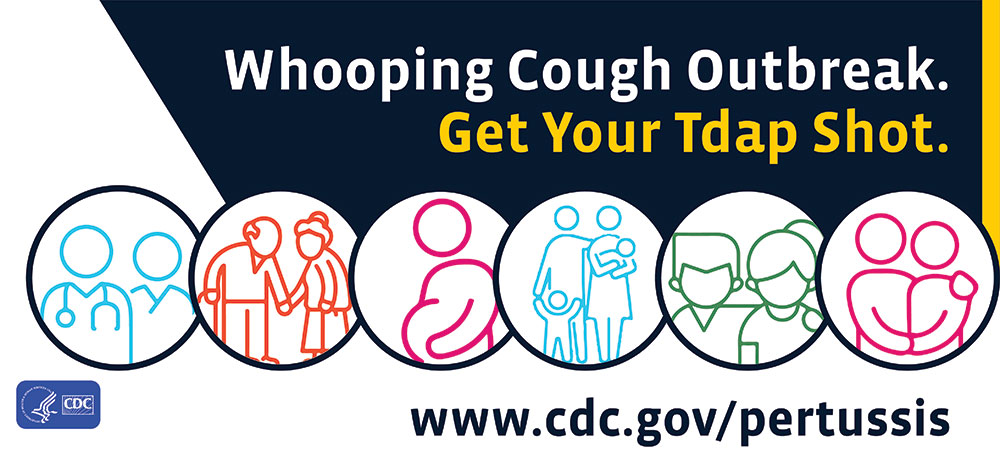Whooping Cough Outbreaks
Whooping cough (pertussis) is an endemic (common) disease in the United States. It is a contagious respiratory illness and spreads easily from person to person. Outbreaks may occur in settings such as schools, child care centers, hospitals, or in large geographic areas.
There are peaks in reported cases of whooping cough every few years and frequent outbreaks. During whooping cough outbreaks, public health officials focus on protecting babies and people at high risk from getting sick and dying from whooping cough. A second goal is to protect people of all other ages from getting whooping cough.
Whooping cough outbreaks can be difficult to identify and manage, and cases of whooping cough may go unreported. Other respiratory bacteria and viruses often cause symptoms similar to whooping cough. Also, the bacteria that cause whooping cough can spread at the same time as other bacteria and viruses.
Active screening for people with symptoms may reduce exposure to others
Public health officials may consider active screening for potential whooping cough cases during outbreaks. Active screening for potential cases may happen in settings such as schools, child care centers, and hospitals to:
- Reduce exposure to people with whooping cough
- Encourage timely medical evaluation and treatment of people with whooping cough
- Promote prompt use of antibiotics to high-risk close contacts
To reduce the risk of whooping cough in new mothers and their young babies, CDC recommends that women receive Tdap vaccine during each pregnancy. The recommended time to get the shot is the 27th through 36th week of pregnancy, preferably during the earlier part of this time period.
Whooping cough is a nationally notifiable disease and doctors should notify the appropriate health department of all people that may have whooping cough. State and local health departments take the lead on outbreak investigations and may involve CDC as needed. State health departments report whooping cough cases to CDC through the National Notifiable Diseases Surveillance System (NNDSS). CDC uses the surveillance system to monitor trends in disease over time.
Learn more about pertussis surveillance and reporting.
